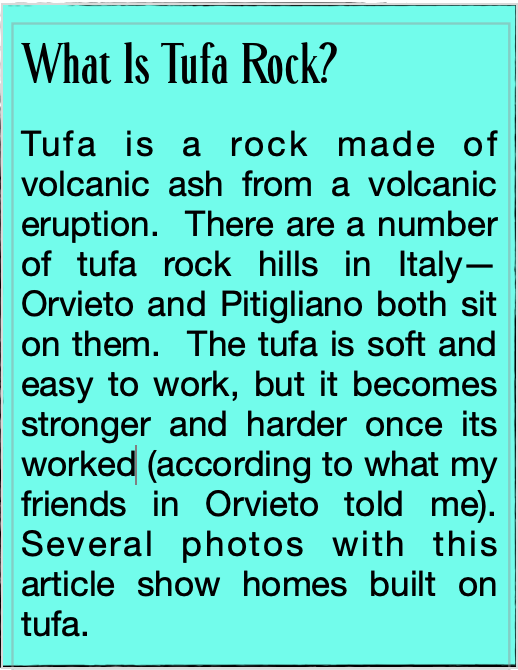
Pitigliano, located in southwestern Tuscany close to its border with Lazio, sits atop a tufa* ridge between Rome and Florence. Evidence suggests the area was home to ancient peoples as early as 2300 BC. The Etruscan tombs and caves throughout the area confirm Pitigliano’s Etruscan roots, and its tunnels also connect Pitigliano to ancient ceremonial sites.
The Beginnings
Pitigliano is most famous for being La Piccola Gerusalemme (The Little Jerusalem). The town was a haven for Jews who escaped the counterreformation campaign of Pope Paul IV and confinement to ghettos in cities like Florence, Ancona, and Siena. Pitigliano, an independent city state, was under the rule of the liberal aristocratic Orsini family which had laissez-faire social policies that allowed the Jewish community to flourish.
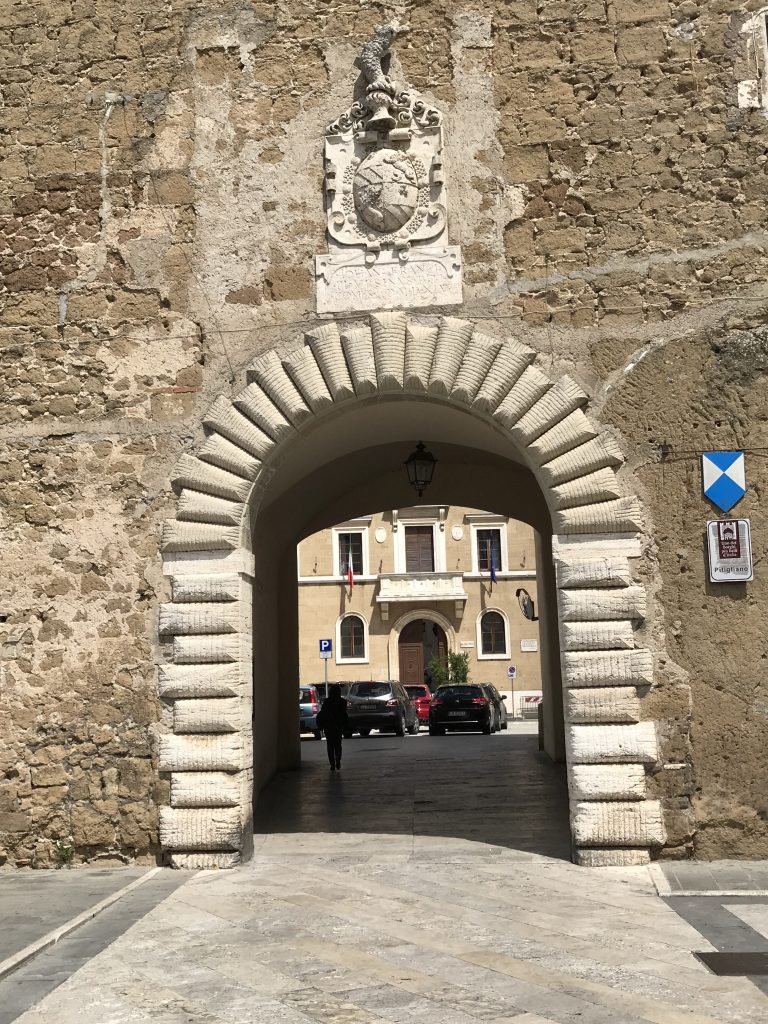
La Piccola Gerusalemme
To escape persecution in Florence, Siena, and Rome, Jews began settling in Pitigliano and set up shop as carpenters, weavers, shoemakers, tailors, bookbinders, moneylenders, and doctors. The community thrived, and in 1598, they built a synagogue and a school. The Orsini family gave a plot of land to their family doctor so that he could bury his wife according to Jewish tradition, and the land remains the town’s Jewish cemetery. The Jews use one of the ancient Etruscan caves as the forno delle azzime, or the bakery where they prepared matzoh for the Passover. They used another cave as a winery, and another area as the kosher butcher shop.
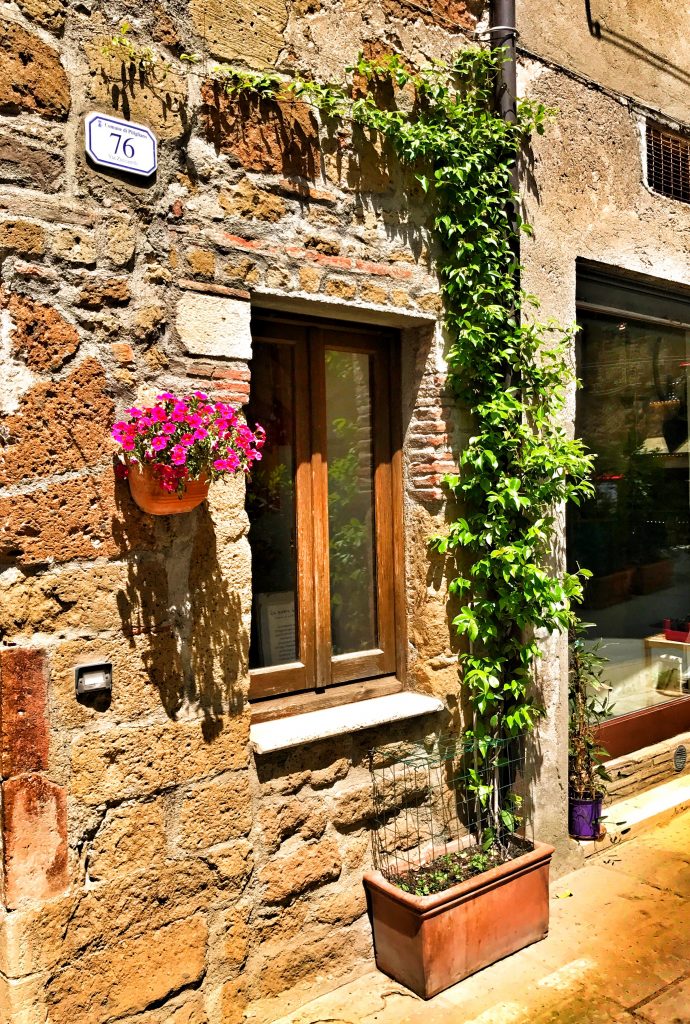
The Jewish population in Pitigliano continued to grow even as the Medicis took control of the town and forced Jews into a ghetto around the synagogue. By the early 19th century, though, life was again normal. Jews made up 20 percent of Pitigliano’s population. Many Jews moved to Livorno and other larger cities after the unification of Italy for financial reasons. There were fewer than 100 Jews left in Pitigliano at the beginning of WWII.
World War II
Mussolini enacted a massive anti-Semitic campaign in the 1930s, and the Nazis later swept through Italy to round-up Jews. The people of Pitigliano, however, protected and hid their Jewish neighbors in the hills and farms surrounding the town. German bombs destroyed part of the synagogue, but the people of the town fixed it and have renovated it twice since.

The Synagogue ©Chris Cutler 
The ceiling of the Synagogue 
Painting in the Synagogue meeting room ©Chris Cutler
After the war, fewer than 50 Jews returned to the town, and today fewer than five remain. Because of that, there are no regular services, and the synagogue does not have a Torah. Occasionally the rabbi from Livorno will come down to hold services, and many Americans hold bar and bat mitzvahs there.
The bakeries in town still produce sfratto dei goym, a pastry created by the Pitigliano Jews to commemorate their eviction and ghettoization in the 18th century. The pastry, shaped like the batons that officers used to pound on the doors of the Jewish homes, has a filling of honey, nuts, orange peel, and nutmeg. Italy’s Slow Food Association has certified sfratto dei goym as an authentic pastry of Pitigliano. If you are interested in the recipe, you can find it here.
Visit Pitigliano
If you find yourself spending a day in Pitigliano, be sure to check out the following sites. (Note: The tourist office is on Piazza Garibaldi just inside the gates to the city.)

Pitigliano City Gate ©Chris Cutler 
Sign at the museum ©Chris Cutler 
The Jewish winery ©Chris Cutler
• The Jewish Ghetto: It goes without saying that you should check out the Jewish Quarter. In addition to the small museum, you can tour the restored synagogue, ritual baths, the Kosher butchering area, the bread ovens, and more.
• Palazzo Orsini: The Orsinis ruled Pitigliano for years, and the town’s walls are actually part of the palazzo. In addition to art, you’ll find some Etruscan ruins and a medieval torture chamber.
• Duomo of Pitigliano: The Cathedral of Saints Peter and Paul dates to 1061. The bell tower, which you can see in the feature photo at the top, was first used for military and civic purposes.

Pitigliano ©Chris Cutler 
Street in Pitigliano ©Chris Cutler 
Pedestrian walkway in Pitigliano ©Chris Cutler 
View of Pitigliano from Piazza della Repubblica ©Chris Cutler
• Via Cave: As noted above, there are tunnels and caves in the rock beneath Pitigliano. If you follow Via Cave, you’re apt to see several ancient tombs throughout the area. While you might find some carved steps, the path is not straight. Be sure to look for chisel marks in the tufa.
• The Medici Aqueduct: Built to supply Pitigliano with water, the aqueduct runs along the town’s walls. Consisting of two large arches and 13 smaller arches, the aqueduct ends in Piazza della Repubblica. The view from the area is spectacular.
Read More Travel Tips with Chris
Italian Markets You Should Not Miss
Italian Market Etiquette and Tips

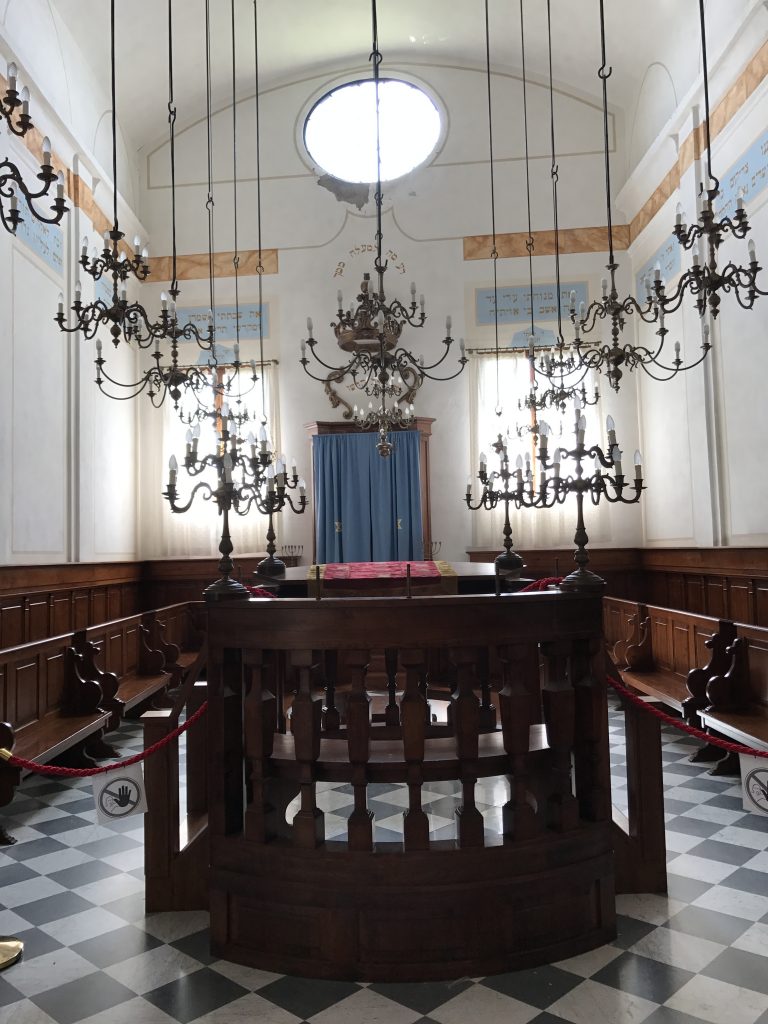
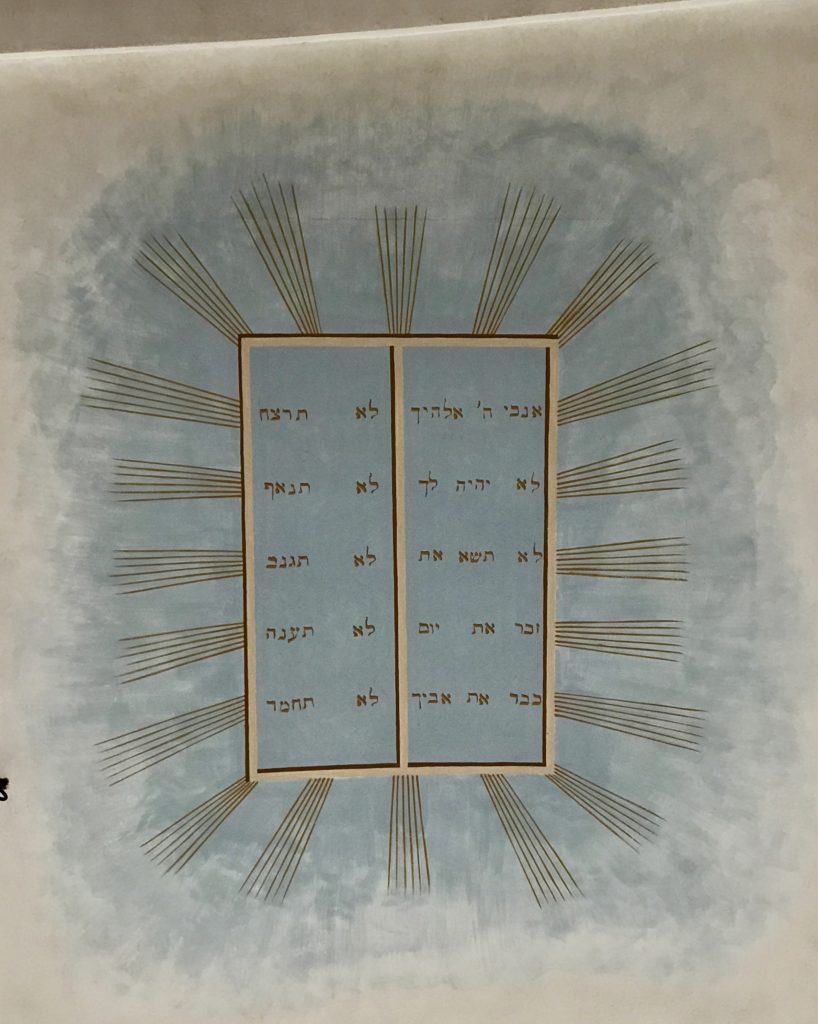
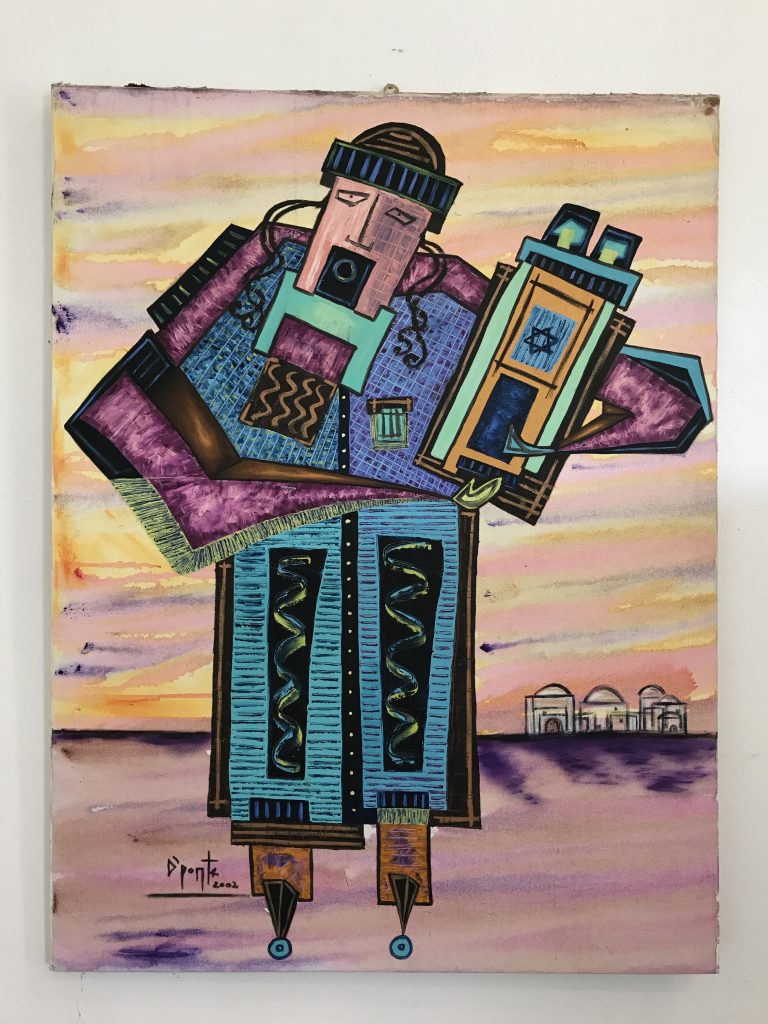
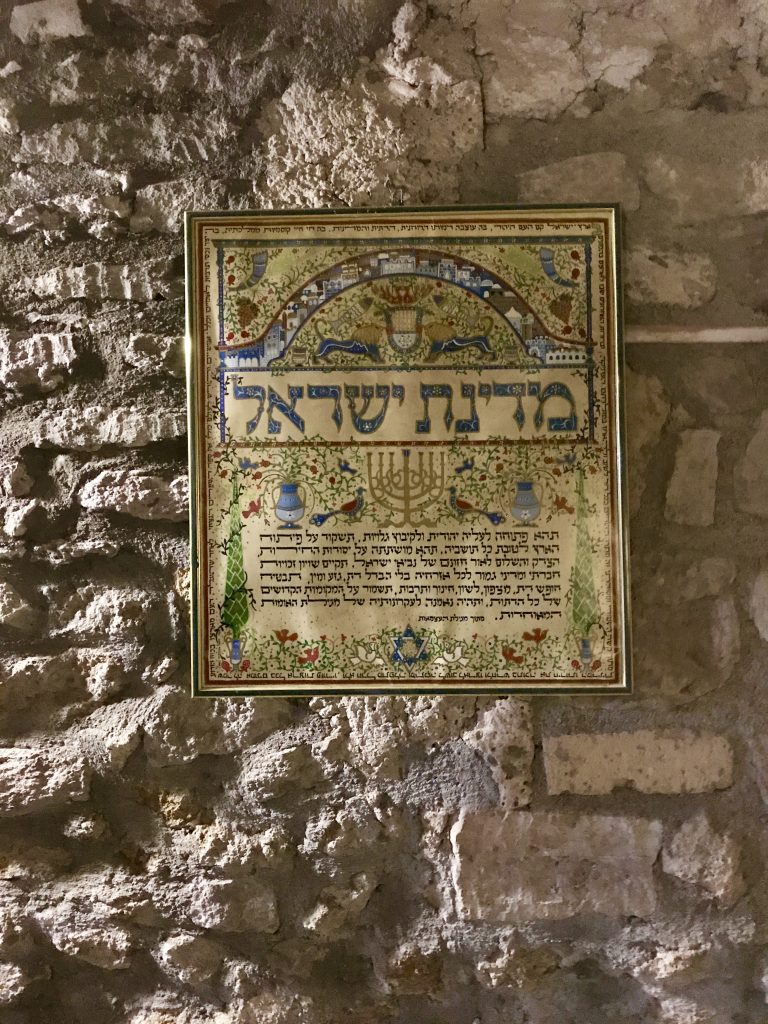
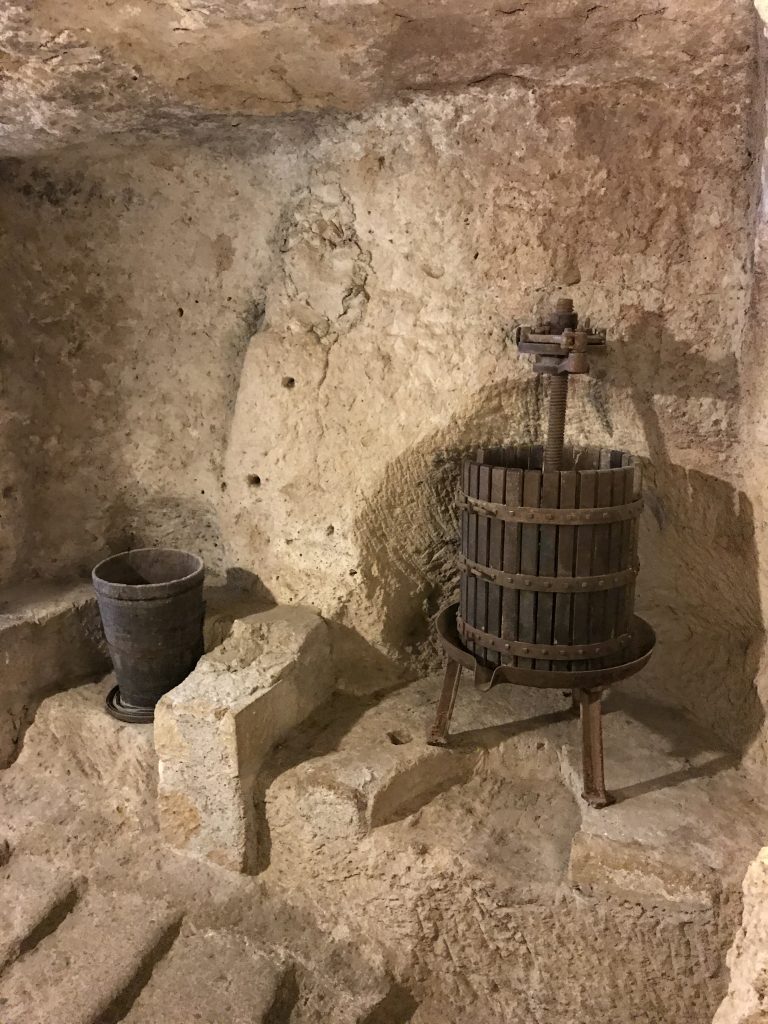
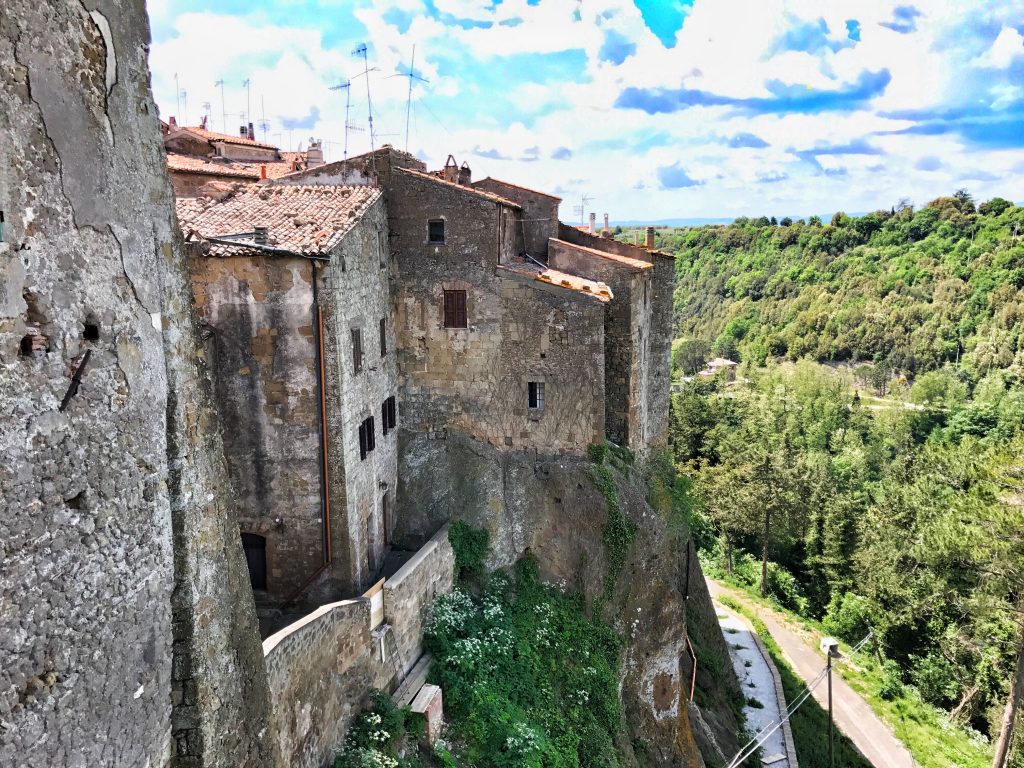
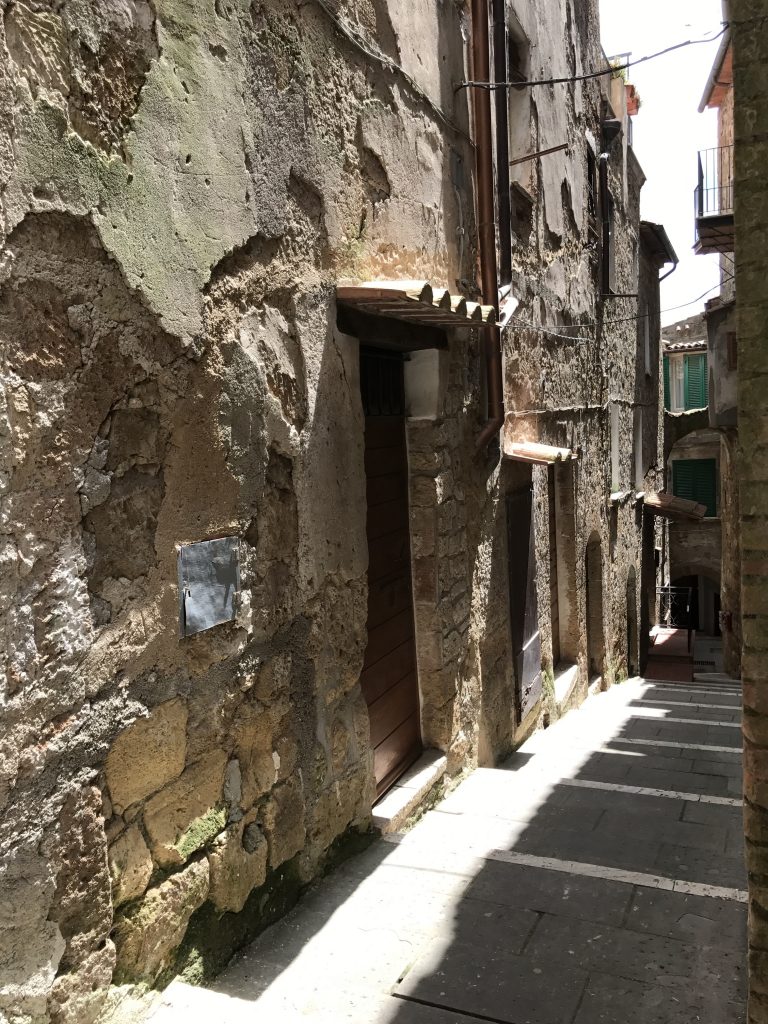
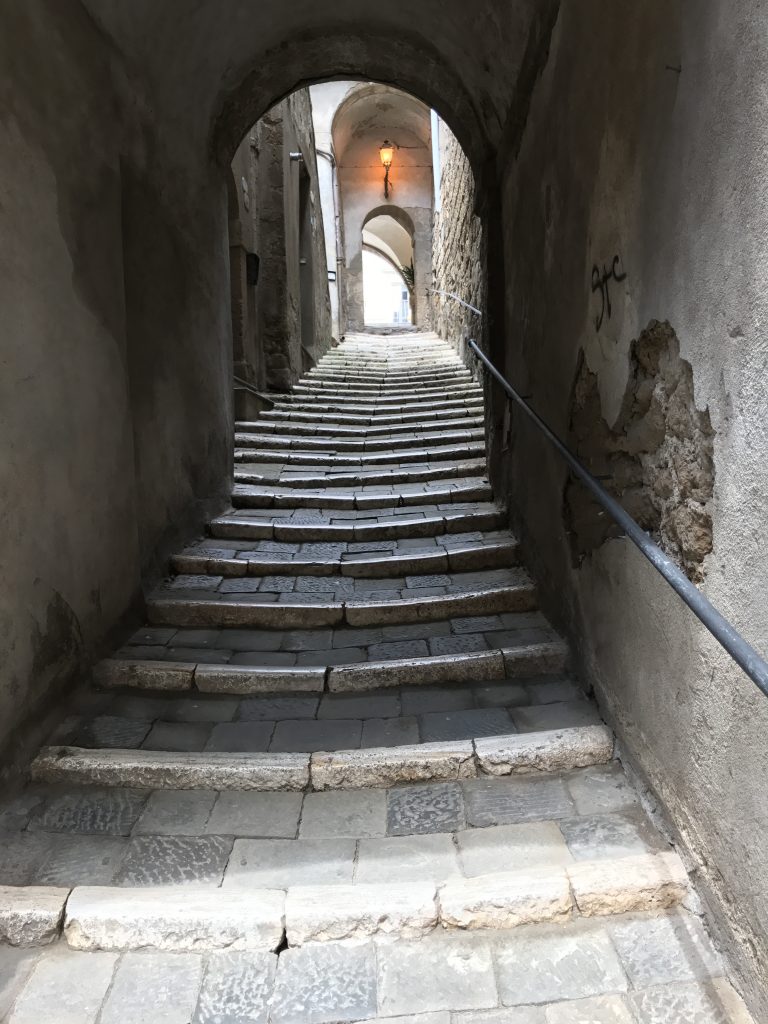



Fascinating and sad. Another home that Jews have been kicked out of after being accepted for a long time. Thanks for sharing.
Hi Melanie: Yes, history is grim but let’s hope that we do learn from it and are more enriched by the blending of cultures that now make up one Italy. Thanks for reading the article!